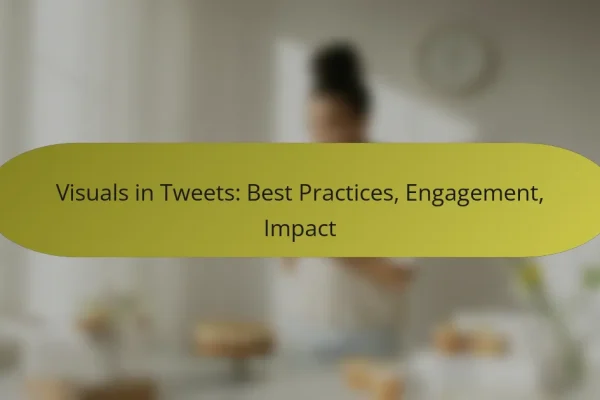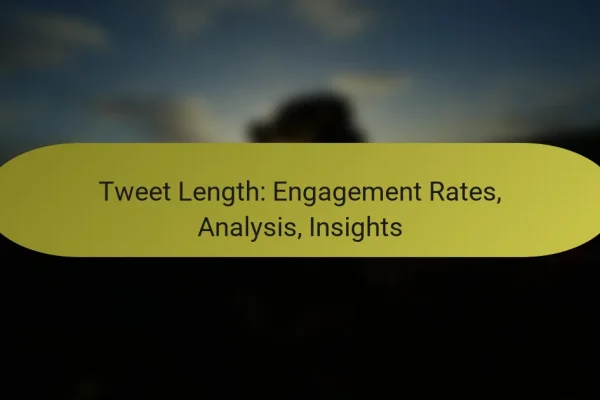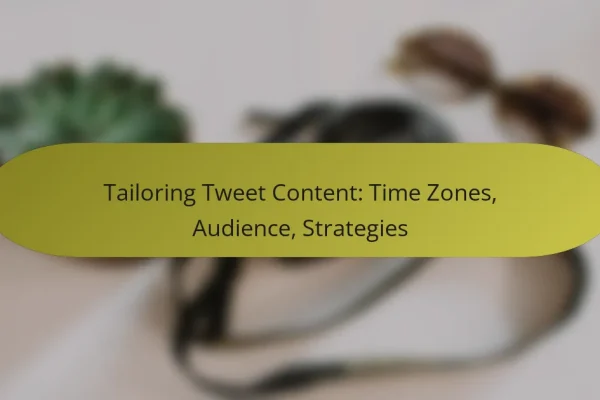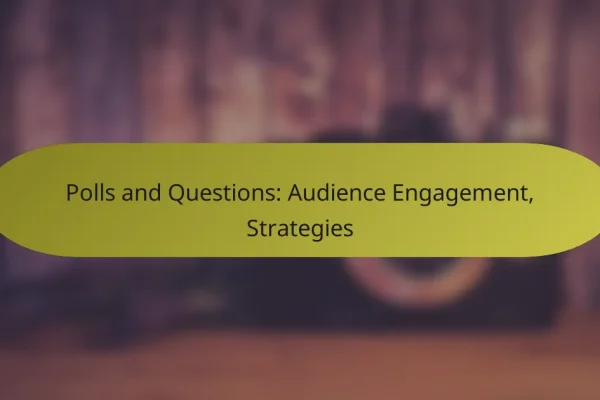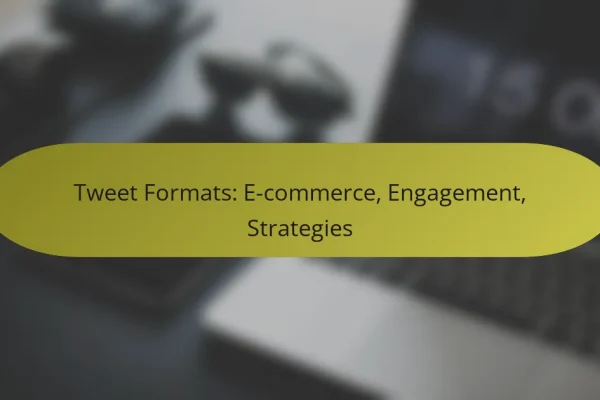How to Craft Engaging Tweets for Australian Audiences
To craft engaging tweets for Australian audiences, focus on using relatable language and cultural references that resonate with locals. This approach fosters a sense of connection and encourages interaction, making your tweets more effective.
Use local slang and references
Incorporating local slang and references is crucial when tweeting to an Australian audience. Terms like “arvo” for afternoon or “bikkie” for biscuit can make your tweets feel more authentic and relatable.
Be mindful of the context in which you use slang; ensure it aligns with your brand voice and the message you want to convey. Overusing slang can alienate some followers, so strike a balance.
Incorporate Australian culture
Integrating elements of Australian culture into your tweets can enhance engagement. Referencing local events, sports, or holidays, such as Australia Day or the AFL Grand Final, can create a shared experience with your audience.
Consider using imagery or themes that reflect the Australian lifestyle, such as beach outings or barbecues. This not only makes your content more relatable but also encourages followers to share their own experiences.
Utilize popular local hashtags
Using popular local hashtags can significantly increase the visibility of your tweets among Australian users. Research trending hashtags relevant to your content or industry, and incorporate them into your posts.
Popular hashtags like #AusPol for political discussions or #SydneyEats for food-related content can help you reach a broader audience. However, avoid using too many hashtags, as this can clutter your message and reduce engagement.
What types of content drive interaction on Twitter?
Content that drives interaction on Twitter typically includes visual elements, engaging questions, and timely updates. These types of posts encourage users to respond, share, and engage with your tweets, ultimately increasing visibility and interaction rates.
Visual content like images and videos
Visual content, such as images and videos, significantly enhances engagement on Twitter. Tweets with images can receive up to 150% more retweets than those without, making them a powerful tool for capturing attention.
When creating visual content, ensure it is high-quality and relevant to your message. Use images that evoke emotions or tell a story, and consider incorporating short videos or GIFs to further engage your audience.
Polls and questions
Polls and questions are effective ways to stimulate interaction on Twitter. By asking your followers for their opinions or preferences, you invite them to participate in a conversation, which can lead to increased engagement.
Keep your questions clear and concise, and consider using polls to make it easy for users to respond. For example, asking followers to choose between two options can spark discussions and encourage sharing.
Timely news and updates
Sharing timely news and updates is crucial for driving interaction on Twitter. Users are often looking for the latest information, and tweets that provide relevant updates can capture attention and prompt retweets.
Stay informed about trending topics and current events in your industry. When sharing news, include your insights or opinions to encourage discussion and make your tweets more engaging. Aim to post updates promptly to maximize relevance and interaction potential.
How to optimize tweet timing for maximum engagement?
To optimize tweet timing for maximum engagement, focus on posting when your audience is most active. This involves understanding peak hours and analyzing user behavior to ensure your tweets reach the largest number of followers.
Post during peak hours in Australia
In Australia, peak tweeting hours typically fall between 12 PM to 3 PM and 6 PM to 9 PM local time. These time frames align with lunch breaks and after-work hours when users are more likely to engage with content. Scheduling tweets during these periods can significantly increase visibility and interaction.
Consider using social media management tools to schedule your tweets ahead of time. This allows you to maintain a consistent posting schedule without needing to be online at all hours.
Analyze audience activity patterns
Understanding your audience’s activity patterns is crucial for timing your tweets effectively. Use Twitter Analytics to track when your followers are most active and adjust your posting schedule accordingly. Look for trends over days and weeks to identify optimal times.
Additionally, consider conducting surveys or polls to gather direct feedback from your audience about their preferred times for engaging with your content. This can provide valuable insights that enhance your engagement strategy.
What are the best practices for writing compelling tweets?
To write compelling tweets, focus on clarity, engagement, and relevance. Effective tweets are concise, include strong calls to action, and tap into current trends to maximize interaction.
Keep it concise and clear
Conciseness is key on Twitter, where character limits require brevity. Aim for tweets that are straightforward and to the point, ideally under 100 characters, to ensure your message is quickly understood.
Use simple language and avoid jargon unless it’s widely recognized by your audience. A clear message increases the likelihood of retweets and replies, as followers can easily grasp your intent.
Use strong calls to action
Incorporating strong calls to action (CTAs) encourages followers to engage with your content. Phrases like “retweet if you agree” or “share your thoughts” prompt immediate responses and interaction.
Be specific in your CTAs. Instead of a vague “check this out,” use direct language such as “click the link to learn more” to guide your audience towards the desired action.
Engage with trending topics
Engaging with trending topics can significantly boost your tweet’s visibility. Monitor Twitter trends and incorporate relevant hashtags or discussions to connect with a broader audience.
However, ensure that your contribution is meaningful and aligns with your brand’s voice. Jumping on trends just for visibility can backfire if it feels disingenuous or out of context.
How can brands measure tweet performance?
Brands can measure tweet performance by analyzing various engagement metrics that indicate how well their content resonates with the audience. Key performance indicators include likes, retweets, replies, and overall reach, which help brands understand their impact on Twitter.
Track engagement metrics
Tracking engagement metrics is essential for brands to gauge tweet performance effectively. Focus on likes, retweets, replies, and impressions to assess how well a tweet is performing. For instance, a tweet with high retweets and replies typically indicates strong audience interest.
Additionally, consider the engagement rate, which is calculated by dividing the total engagements by the total impressions. A higher engagement rate suggests that the content is resonating well with the audience, while a lower rate may indicate the need for content adjustments.
Use Twitter Analytics tools
Twitter Analytics provides brands with in-depth insights into tweet performance. This tool allows users to view detailed metrics, including engagement rates, impressions, and audience demographics. By utilizing these insights, brands can refine their strategies to enhance interaction.
To get started, access Twitter Analytics through your account settings. Regularly review your tweet performance data to identify trends and patterns, which can inform future content creation. Look for tweets that performed exceptionally well and analyze what made them successful to replicate that success in future posts.
What tools can assist in crafting effective tweets?
Several tools can enhance your ability to create engaging tweets that drive interaction. Utilizing platforms like Canva, TweetDeck, and Hootsuite can streamline the process of designing visuals, scheduling posts, and analyzing performance metrics.
Canva for visuals
Canva is a user-friendly graphic design tool that allows you to create eye-catching visuals for your tweets. With a variety of templates and design elements, you can produce images that complement your text and attract more engagement.
When using Canva, focus on maintaining brand consistency by using your logo and brand colors. Aim for images that are optimized for Twitter’s dimensions, typically around 1200 x 675 pixels, to ensure they display well on users’ feeds.
TweetDeck for scheduling
TweetDeck is a powerful tool for scheduling tweets, allowing you to plan your content in advance. This can help maintain a consistent posting schedule, which is crucial for keeping your audience engaged over time.
To effectively use TweetDeck, consider scheduling tweets during peak engagement times, which often range from early morning to late evening. This strategy can increase the likelihood of your tweets being seen and interacted with by a larger audience.
Hootsuite for analytics
Hootsuite provides comprehensive analytics that help you track the performance of your tweets. By analyzing metrics such as engagement rates, click-through rates, and follower growth, you can refine your tweeting strategy based on what resonates with your audience.
When using Hootsuite, regularly review your analytics to identify trends and adjust your content accordingly. Focus on the types of tweets that generate the most interaction, and consider experimenting with different formats, such as polls or threads, to see what works best.
What are common mistakes to avoid in tweeting?
Common mistakes in tweeting can significantly hinder engagement and interaction. Avoiding these pitfalls can lead to more effective communication and a stronger connection with your audience.
Overusing hashtags
Overusing hashtags can clutter your tweet and dilute your message. While hashtags can enhance discoverability, using too many can make your content seem spammy and unprofessional.
Experts recommend using no more than two or three relevant hashtags per tweet. This keeps your message clear and focused while still allowing users to find your content through searches.
For example, instead of writing “Check out our new product! #launch #new #exciting #innovation”, opt for “Check out our new product! #launch #innovation”. This approach maintains clarity and encourages interaction without overwhelming your audience.
